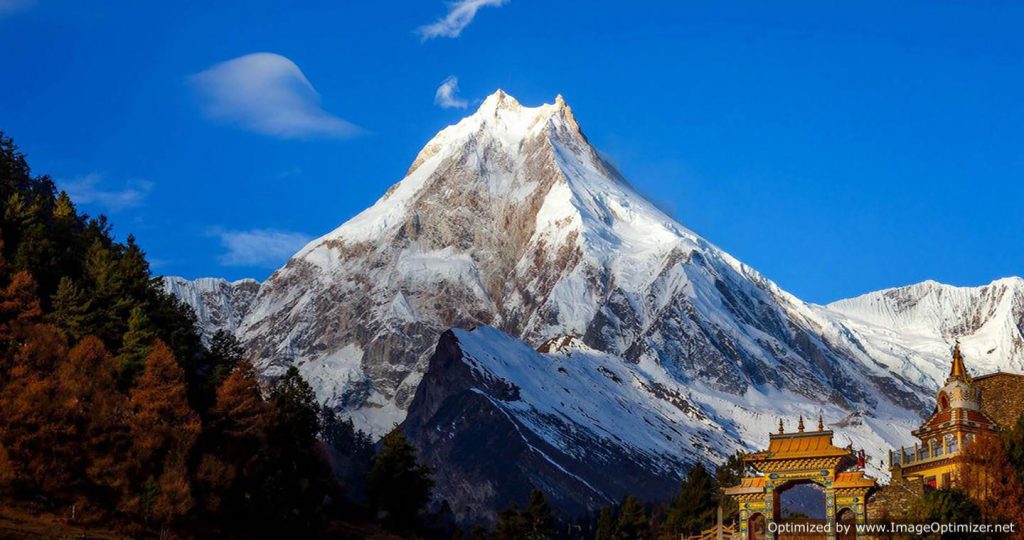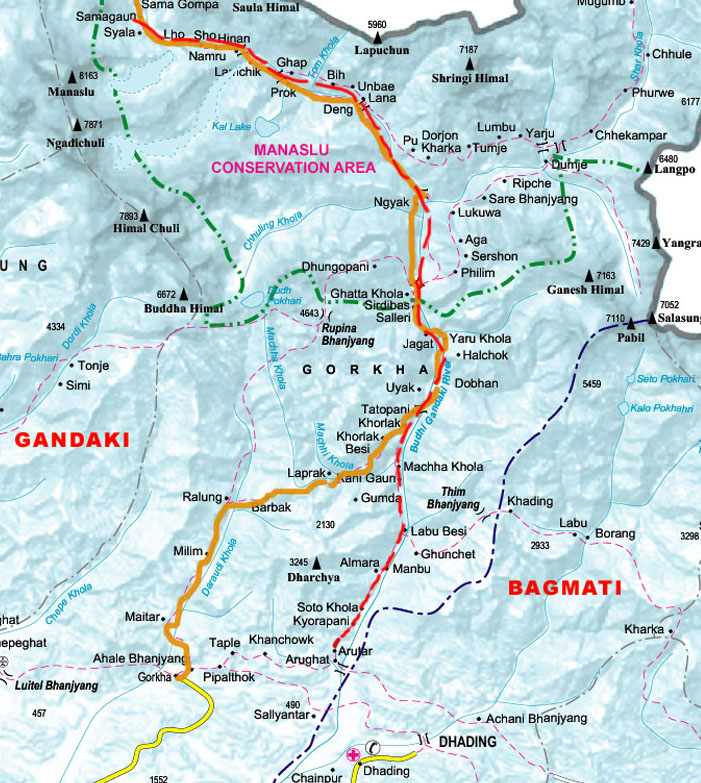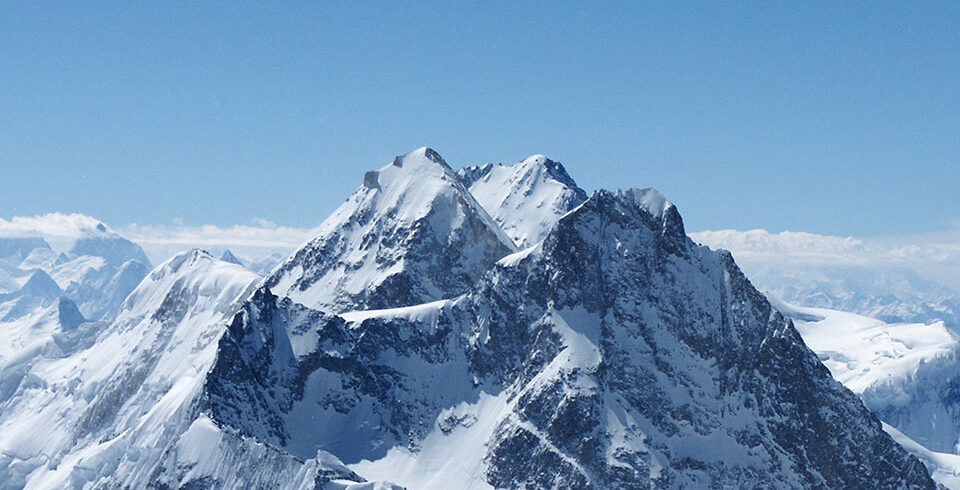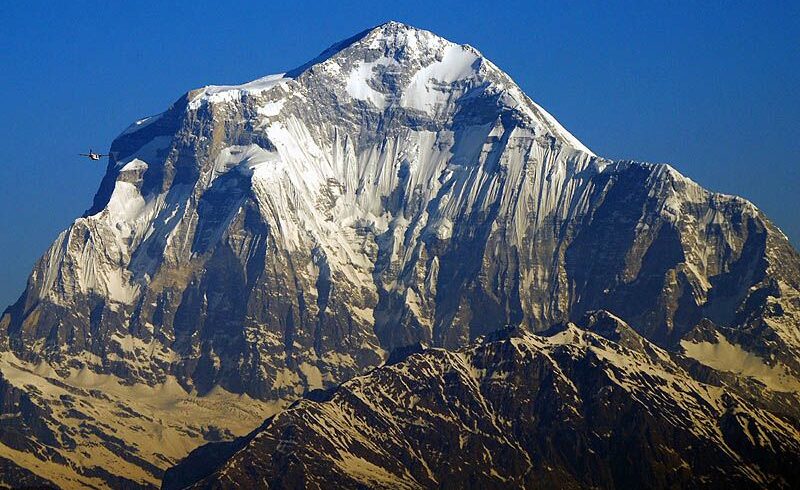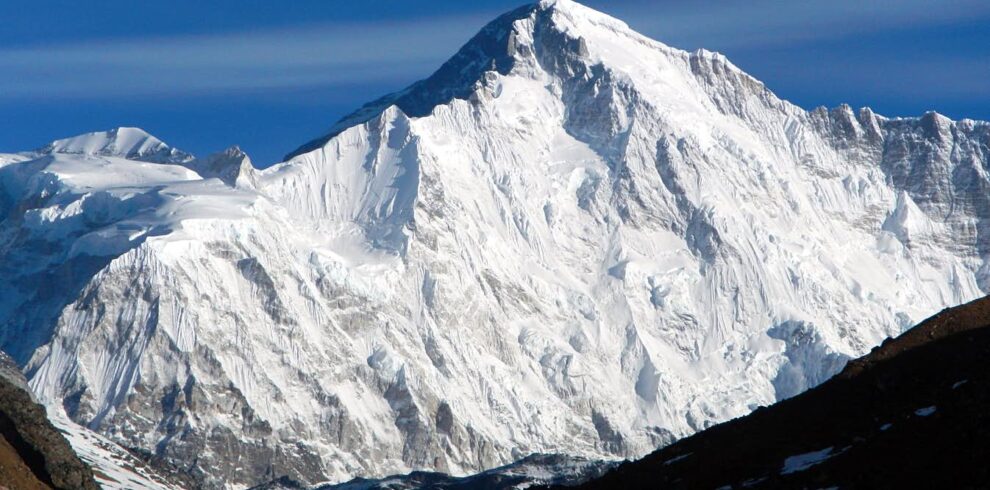Manaslu , which is known as Kutang, is the eighth highest mountain in the world at 8,163 metres (26,781 ft) above sea level. It is located in the Mansiri Himal, part of the Nepalese Himalayas, in the west-central part of Nepal. Its name, which means “mountain of the spirit”, comes from the Sanskrit word manasa, meaning “intellect” or “soul”. Manaslu was first climbed on May 9, 1956 by Toshio Imanishi and Gyalzen Norbu, members of a Japanese expedition.
Manaslu is the highest peak in the Gorkha District and is located about 64 km (40 mi) east of Annapurna.
The Manaslu region offers a variety of trekking options. The Nepalese Government only permitted trekking of this circuit in 1991. The trekking trail follows an ancient salt-trading route along the Budi Gandak River. En route, 10 peaks over 6,500 metres (21,300 ft) are visible, including a few over 7,000 metres (23,000 ft). The highest point reached along the trek route is the Larkya La at an elevation of 5,106 metres (16,752 ft).
Itinerary
The company will pick up you from the airport and drive you to the hotel.
Sightseeing tour in Kathmandu includes guided tour around the valley while the company will prepare documents like the permit required for the trek.
We begin our trek and drive from Kathmandu to Arughat. Again drive by local Jeep to the Sotikhola through the Gurung and Magar villages, past fields and waterfalls. It will take about 8-9 hours to reach Sotikhokla. We will stay overnight in Soti Khola.
After breakfast, we begin our trek from Soti Khola to Machha Khola and walk over the rocky and narrow road along with the rivers, forests and waterfalls. It will be 5-6 hours of trek until we reach Machha Khola.
We start our journey in the Manaslu region of Nepal. We cross Machhakhola and climb up gradually towards the small village of Khorla Besi and the natural hot spring at Tatopani. As we walk through the forest, we cross Budhi Gandaki, climb over a ridge and finally reach the village of Jagat following the trail with 7-8 hours of walk.
After leaving Jagat, we follow the trail and cross over the suspension bridge over the Budhi Gandaki river to enter Philim which is a large Gurung village. From Philim, we pass through the dense forests of pine and rhododendron and finally reach Deng which takes around 6-7 hours.
Early in the morning, we will follow the trail to arrive at Ghap, a small settlement with a couple of stone houses and mani walls.
After making it through the woods filled with rhododendron, we will climb the trail to Namrung which takes around 6-7 hours.
On this day, we will hike up to Samagaun. After leaving the village, our trail passes a waterfall after coming across the village of Barchham. Passing the village of Sho, the trail heads through the Numla river, an area with heartwarming views of Manaslu, and Himal Chuli. Trekking for almost 5-6 hours, we’ll finally reach Samagaun.
Today, we will be acclimatizing to high altitude coming ahead of our trekking. On this day, we will explore the surroundings of Samagaun.
After leaving Samagaun, we will walk through the trail ahead that passes through Birendra Kund which is a lake resting at the foot of a glacier. The trail ahead is steep and tiring so we’ll go slow, as well as have a break to retrieve energy. Reaching the base camp after 3-4 hours of walking, our sherpa crew will set up camp and prepare for the climbing.
After achieving the summit of Mt. Manaslu, We will start to get back. We will clean the area, collect our garbages, pack our items and then prepare ourselves for the return journey. We start to retrace our steps on the same trail that heads back towards Samagaun. We will camp at Samagaun for the overnight stay.
After breakfast, we start our trek and follow the route to Samdo. As we forge ahead from Samagaon, the trail moves on north beside Budhi Gandaki river. It descends to the river and passes the bridge before making a short climb to Samdo which takes around 3-4 hours. Like every other village in the Himalayas, Samdo is incredibly gorgeous with ancient Tibetan monasteries.
After breakfast, we leave Samdo and climb down the trail before crossing the bridge over Gyala river. Next, it ascends to Larkya Bazaar and the trail continues uphill aside to the north face of Manaslu. Trekking along with the amazing views of mountains and forest for about 6 hours, we’ll eventually get to Larkya Phedi.
The journey from Larkya Phedi to Bimthang starts off with a gentle climb over a ridge. We will follow the steep trail up to the Larkya La Pass from where you can catch the mesmerizing views of the mountains. From there, we will climb down the trail through ice sheets and snow-covered terrain. After 2-9 hours of trek, we finally reach Bimthang.
This is the last day of the trek as we will walk up to Dharapani from Bimtang which takes around 7 to 8 hours. From Bimtang, we will climb down the path through green forests of pine and rhododendron. Lastly, we’ll cross the suspension bridge on top of the Marsyangdi river to meet Dharapani which is our destination for the day.
After leaving Dharapani, we will drive from there to Besisahar. It takes around 4-5 hours to reach Besisahar. On this day, we will get enough rest and you can explore Besisahar on this day.
We will get back to Kathmandu from Besisahar within 4-5 hours of drive on this day. Upon reaching Kathmandu, you will be transferred to your hotel.
On this day, you can either go sightseeing around Kathmandu valley with our representative or can go shopping to buy souvenirs for your family and friends.
The company will drop you at the airport as per your flight schedule.

